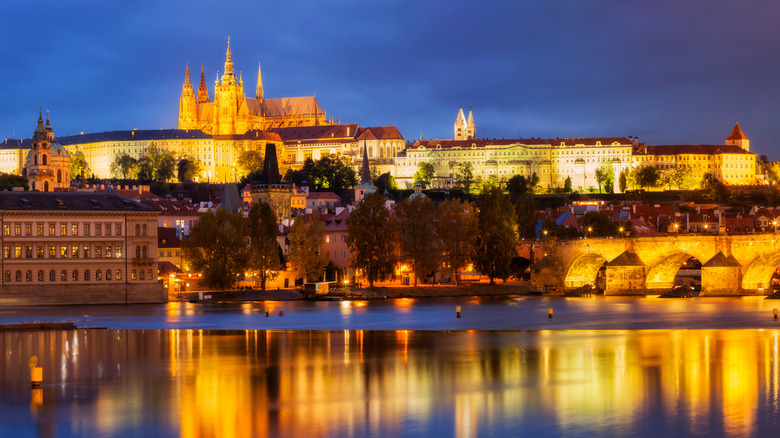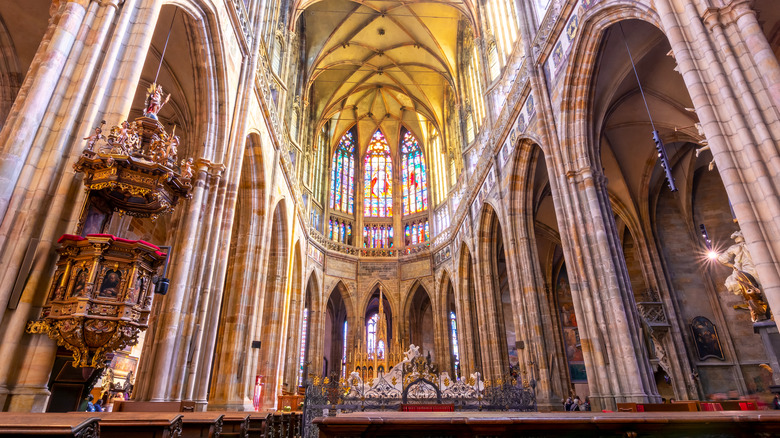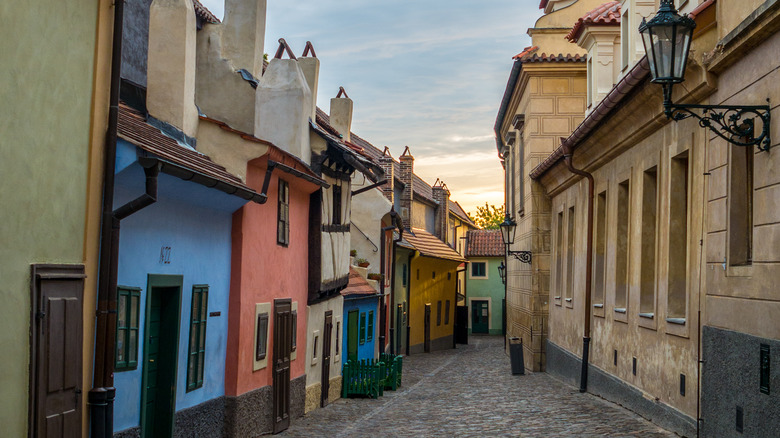This Central European City Features The Largest Ancient Castle In The World
Thanks to fairy tales, folklore, and frequent coverage of the British royal family, castles are quite steeped into multiple cultures around the world. However, they do not all look like Cinderella's castle in Walt Disney World or even England's Windsor Castle. Former and current royal residencies of the world are as varied as the times and places in which they each find themselves.
Czechia (formerly known as Czech Republic) is a castle lovers dream. With more than 2,000, it is among the countries with the most castles in the world. If that is not a big enough claim to fame, Guinness World Records named the Prague Castle in Czechia as the largest ancient castle in the world. The components that make up the castle complex tower over Prague and can be seen from multiple points in the city. Though the Prague Castle has gone through changes over the centuries, there has been a structure at this location since 879 AD. The castle complex covers around 18 acres of Prague's Hradčany region and offers much more than history lessons.
St. Vitus Cathedral is at the center of the Prague Castle complex
Archeologists agree that Prince Bořivoj founded the space that became the Prague Castle. Early structures became the residency of Bohemian kings. Among these was King Charles IV, who was also an emperor of the Holy Roman Empire in the 1300s. He rebuilt the castle and started construction on the magnificent St. Vitus Cathedral, which is now a centerpiece of the castle complex. More changes came with the rule of the Jagellons in the late 1400s and then the Austrian Habsburgs, who ruled from the 1500s until the establishment of an independent Czechoslovakia in 1918. Habsburg rule endured the Thirty Years' War, an international conflict sparked in 1618 when Protestant leaders threw three Catholic leaders out of a window — an act called defenestration — in the Prague Castle. In 1939, the castle was again a witness of somber history when Nazis entered the castle walls while announcing their takeover of Czechoslovakia.
Though Czechia is a democracy (as was Czechoslovakia), the Prague Castle remains the seat of the Czech government. Along with being a Guinness World Record holder, the Prague Castle is a UNESCO World Heritage site. Its grandeur attracts about 2 million people each year.
See medieval artifacts at the Golden Lane
A modern-day visit to the Prague Castle includes the iconic St. Vitus Cathedral, the Old Royal Palace complete with a royal throne, and the Golden Lane. The Golden Lane (pictured above) is a unique row of houses which were once used by castle staff. The Golden Lane also includes an exhibit with medieval armor and eerie torture equipment. Dark sites continue at the end of the Golden Lane with the Daliborka Tower, which operated as a prison from the late 1400s to the 1700s and now takes visitors to a dungeon-like room with prison equipment. If dungeons are not your thing, the space near the tower and the walk back to the rest of Prague has multiple spots for gorgeous views of the city.
Tourists can reach the Prague Castle from the north side via tram line 22. The short walk from the Pražský hrad tram stop to the castle entrance is near peaceful gardens like Královská zahrada (Royal Gardens). Entering from the south side allows you to walk through Malá Strana, a popular area of Prague with narrow streets, shops, and pastel buildings worthy of fairy tales. The inclined path near Nerudova Street in Malá Strana that leads to the Prague Castle shows off more amazing views of nearly the entire city below.


